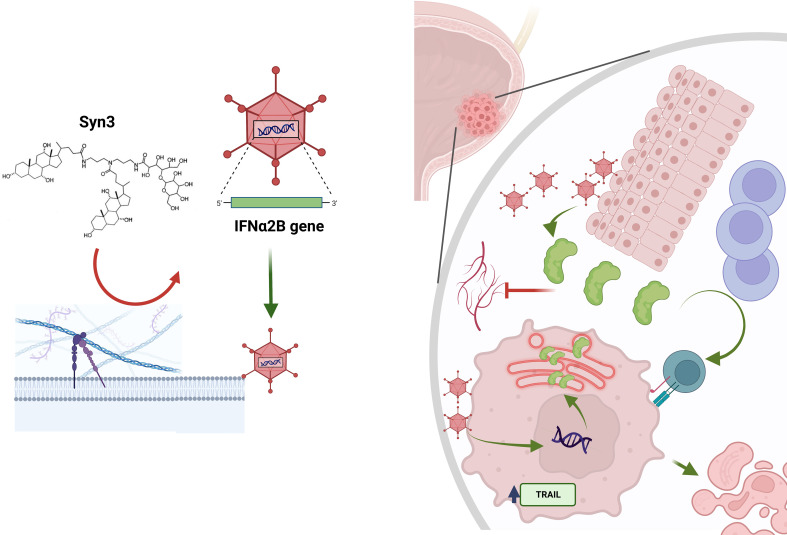Figure 1.
Mechanism of action of nadofaragene firadenovec and Syn3. Syn3 disrupts the bladder glycocalyx, allowing for the adenoviral vector to bind to its coxsackie-adenoviral receptor (not shown). The viral vector can transfect normal cells and cancerous cells. In the latter, interferon alpha (IFNα) synthesis can induce endoplasmic reticulum stress (in red within the tumor cell), which leads to apoptosis via caspase 4 activation, or to TNF-related apoptosis-inducing ligand (TRAIL) activation, which ultimately leads to apoptosis. The transfected normal cells produce IFNα. This phenomenon is known as the “bystander effect”. IFNα is released in the urine, where it can be measured, and in the extracellular matrix. Here, IFNα is responsible for T cell recruitment and activation and also decreased angiogenesis.

